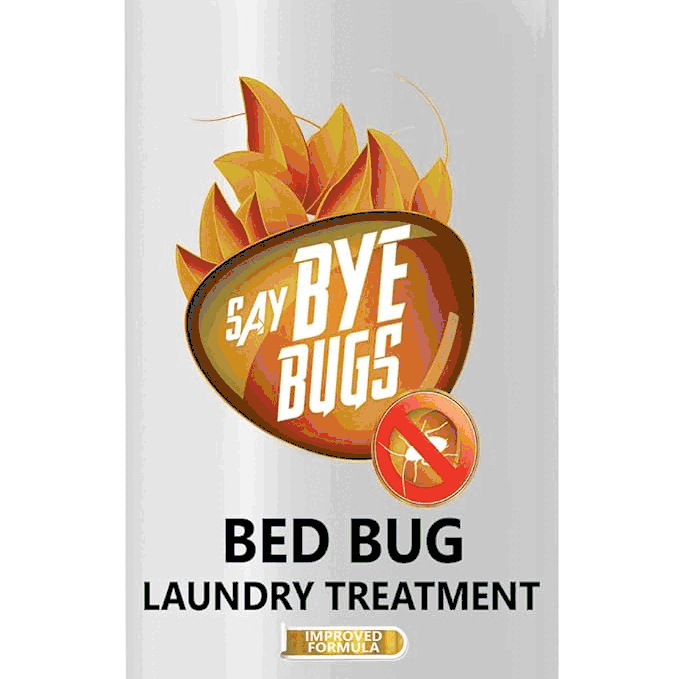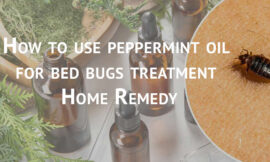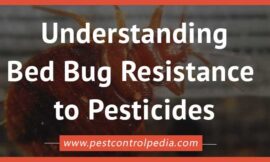Have you ever wondered, what do bed bugs look like? Understanding the cause of bed bugs in your home and their appearance is crucial for effective identification and control. In this article, we will explore the various stages of bed bugs and how to spot them.
Bed bugs are notorious pests that can invade your home without notice. Knowing what do bed bugs look like can help you take immediate action if you suspect an infestation. Let's dive into their characteristics and life cycle.
In this guide, we will not only answer the question of what do bed bugs look like, but also provide tips on prevention and treatment. Stay tuned for essential information that can protect your home.
Discovering the truth about bed bugs can empower you to reclaim your space and peace of mind.
Table of Contents
ToggleWhat Do Bed Bugs Look Like?
Bed bugs, scientifically known as Cimex lectularius, are small insects that feed on human blood. They are typically about the size of an apple seed, measuring approximately 5 to 7 mm in length.
Physical Characteristics
Color
- Unfed Adults: Typically reddish-brown or mahogany in color.
- Fed Adults: After feeding, they appear darker red due to the blood they have ingested.
- Nymphs (Young Bed Bugs): Nearly colorless and become more pigmented as they mature and feed.
Size
Adult bed bugs measure approximately 4 to 7 mm in length (about 1/4 inch), roughly the size of an apple seed. Nymphs vary in size depending on their developmental stage, starting from about 1.3 mm when newly hatched and growing larger through each of the five instar stages.
Shape
Bed bugs have a flat, oval shape when unfed. After feeding, they become more elongated and swollen, resembling a pill. Their bodies are broad and flattened, which helps them hide in crevices and seams of mattresses and furniture.
Body Structure
- They possess six legs and two short antennae.
- Adult bed bugs have vestigial wing pads but do not have functional wings, making them incapable of flight.
- A distinctive feature is their large abdomen with dark horizontal lines across it, particularly noticeable after feeding.
Behavior and Signs of Infestation
Bed bugs are nocturnal and tend to hide during the day in cracks and crevices. Signs of an infestation include:
- Blood spots on bedding.
- Dark fecal spots (reddish-black) on surfaces.
- Shed skins from molting nymphs.
Recognizing these features can help effectively identify bed bugs and address any potential infestations promptly.
The Life Cycle of Bed Bugs
The life cycle of a bed bug consists of several stages: eggs, nymphs, and adults. Each stage has distinct characteristics that help in identification.
- Eggs: Tiny and pearl-white, they are often laid in clusters.
- Nymphs: These immature bed bugs grow through five stages before reaching adulthood. They appear smaller and lighter in color until they feed.
- Adults: Fully grown bed bugs are about 5-7 mm long with a flat body when unfed. After feeding, they become swollen and elongated.
How to Identify Bed Bugs
- Visible Bugs: Adult bed bugs can be seen with the naked eye, especially around bedding and furniture seams.
- Fecal Spots: Small reddish-brown spots on mattresses or walls indicate their presence.
- Molt Skins: As they grow, bed bugs shed their skins; finding these can signal an infestation.
Common Misconceptions About Bed Bugs
Many people confuse bed bugs with other insects due to their similar appearances. It's important to differentiate them from pests like cockroaches or carpet beetles.Preventing Bed Bug Infestations
- Avoid second-hand furniture: Inspect any second-hand items thoroughly before bringing them home.
- Regular cleaning: Vacuum frequently and wash bedding regularly to eliminate potential hiding spots.
- Seal cracks: Use caulk to seal any cracks or crevices where bed bugs may enter your home.
Treatment Options for Bed Bug Infestations
- Pest Control Professionals: Hiring experts ensures thorough extermination using specialized techniques.
- Diy Methods: Use heat treatments or insecticides specifically designed for bed bug control.
- Caution with Home Remedies: Many DIY solutions lack effectiveness; it's best to rely on proven methods.
Frequently Asked Questions - FAQS
Q. What do adult bed bugs look like?
A. Adult bed bugs are oval-shaped, brown before feeding, and reddish-brown after feeding, about the size of an apple seed.
Q. How can I tell if I have a bed bug infestation?
A. Look for visible bugs, fecal spots on bedding, or shed skins around your sleeping areas.
Q. Are bed bug bites harmful?
A. While not disease carriers, their bites can cause itching and allergic reactions in some individuals.
Q. Can I get rid of bed bugs myself?
A. DIY methods can be effective but hiring professionals is often more thorough for complete eradication.
Q. How fast do bed bugs reproduce?
A. Bed bugs can reproduce quickly; a female can lay up to five eggs per day under ideal conditions.
Q. What attracts bed bugs to my home?
A. They are attracted by warmth and carbon dioxide emitted by humans during sleep.
Q. Can I see baby bed bugs?
A. Yes, but baby bed bugs (nymphs) are much smaller and may be harder to spot than adults.
Q. Do I need to throw away my mattress if I have bed bugs?
A. Not necessarily; treatment options exist that allow you to keep your mattress while eliminating the pests.
Q. How long do bed bugs live?
A. Under optimal conditions, adult bed bugs can live several months without feeding.
Q. Can pets carry bed bugs into my home?
A. Pets cannot host bed bugs but may carry them on their fur from infested areas.



